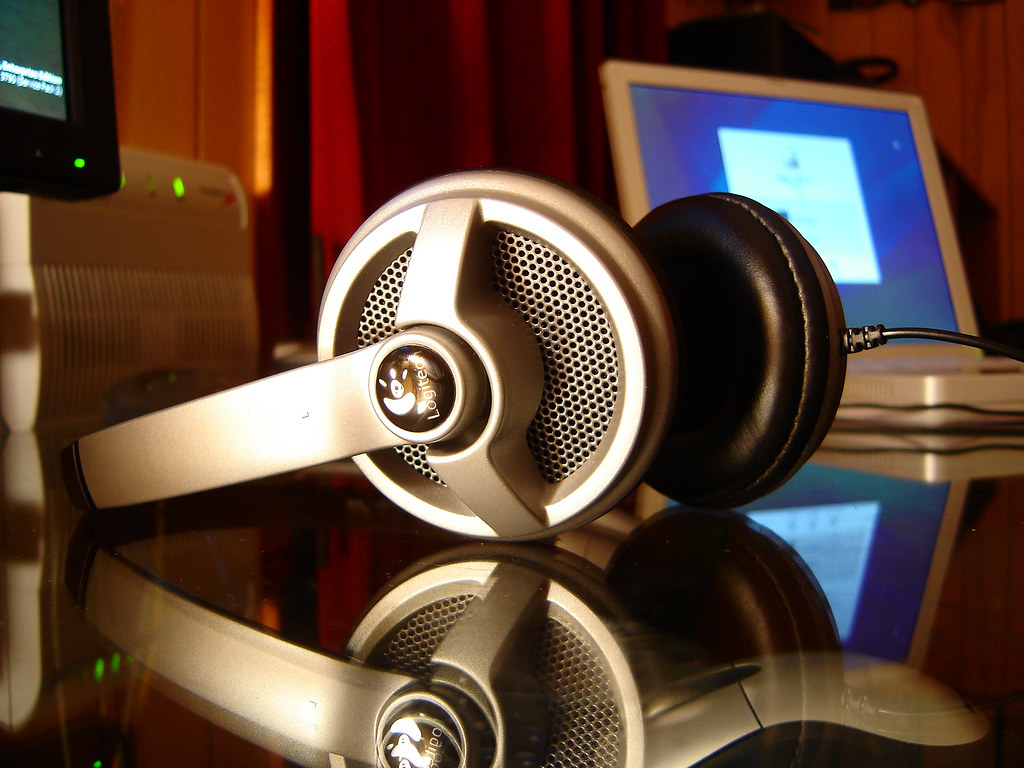In the world of immersive gaming experiences, audio plays a crucial role in enhancing gameplay and creating a truly captivating environment. When it Gaming Headsets vs Regular Headphones, they may seem similar at first glance, there are distinct differences that set them apart.
In this article, we will delve into the dissimilarities between gaming headsets and regular headphones, shedding light on their unique features, functionalities, and the advantages they bring to the gaming realm.
So, whether you’re a hardcore gamer seeking that competitive edge or a casual player looking to level up your audio game, understanding the disparity between gaming headsets and regular headphones is key to making an informed decision.
Table of Contents
Gaming Headsets Explained

Gaming headsets are specifically designed audio devices tailored for gaming enthusiasts and professionals. They are built with the intention of providing an immersive gaming experience by offering high-quality sound and a range of additional features.
Here’s a closer look at the key aspects that define gaming headsets:
- Enhanced Audio Quality: Gaming headsets are engineered to deliver superior audio quality, emphasizing details such as positional sound, surround sound, and accurate reproduction of in-game effects. They often utilize advanced audio technologies, like virtual surround sound, to create a more immersive gaming environment.
- Integrated Microphone: Most gaming headsets come with a built-in microphone, allowing gamers to communicate with teammates or opponents during multiplayer sessions. The microphones are strategically positioned to capture clear voice input while minimizing background noise. Some models even feature noise-cancelling technology to further enhance communication clarity.
- Ergonomic Design: Gaming headsets prioritize comfort during extended gaming sessions. They are typically equipped with plush padding and adjustable headbands to provide a snug fit without causing discomfort. The ear cups are designed to enclose the ears fully, reducing external noise and creating a more isolated audio experience.
- Gaming-specific Features: Many gaming headsets come with specialized features that cater to gamers’ needs. These include on-cable controls for quick adjustments, customizable LED lighting for aesthetic appeal, and compatibility with gaming consoles, PCs, and mobile devices.
- Durability and Build Quality: Gaming headsets are constructed with durability in mind, as they are designed to withstand the rigors of intense gaming. They often feature sturdy materials, reinforced cables, and durable connectors to ensure longevity.
- Software Integration: Certain gaming headsets are accompanied by software that allows users to customize sound profiles, adjust equalization settings, and create personalized audio presets for different games. This software integration enhances the overall audio experience and provides further control over the headset’s functionalities.
Gaming headsets are tailored specifically for gaming purposes, focusing on delivering optimal audio performance, comfort, and communication capabilities.
While they excel in gaming applications, their audio quality and specialized features may vary when compared to regular headphones, which we will explore in the next section.
Regular Headphones Explained
Regular headphones, also known as traditional or consumer headphones, are audio devices designed for general listening purposes across a wide range of applications.
Unlike gaming headsets, regular headphones are not specifically optimized for gaming, but they excel in delivering high-quality audio for music, movies, podcasts, and more. Here are the key features that define regular headphones:
- Audio Fidelity: Regular headphones prioritize accurate audio reproduction, aiming to deliver a balanced and natural sound signature across various genres. They often provide a wide frequency response range, allowing users to appreciate the nuances and details in the music or audio content they are consuming.
- Versatility: Regular headphones are versatile in their functionality and can be used with a variety of devices, including smartphones, tablets, computers, and audio systems. They usually come with standard audio jacks (3.5mm) or wireless connectivity options (such as Bluetooth) for easy compatibility.
- Comfort and Portability: Regular headphones focus on comfort during extended listening sessions. They feature lightweight designs, adjustable headbands, and cushioned ear cups that ensure a comfortable fit. Additionally, they are often foldable or compact, making them convenient to carry around.
- Noise Isolation and Cancelation: While regular headphones may not provide active noise-canceling technology found in some premium models, they often offer passive noise isolation. This means that the design of the ear cups helps to block out external noise to some extent, allowing users to focus on their audio content.
- Microphone (optional): While some regular headphones may include a built-in microphone, it is not a standard feature. If microphone functionality is required, an external microphone would need to be used or a headset with an integrated microphone can be chosen.
- Price Range and Options: Regular headphones come in a wide range of prices, catering to different budgets and preferences. They offer a variety of options, including different styles (over-ear, on-ear, in-ear), open-back or closed-back designs, and different sound signatures (bass-heavy, neutral, etc.), allowing users to select a pair that suits their specific needs.
Regular headphones prioritize audio quality, versatility, comfort, and portability across various applications. While they may lack gaming-specific features, they offer a broader range of options and are suitable for a wide range of audio experiences beyond gaming.
Key Differences: Gaming Headsets vs Regular Headphones
While gaming headsets and regular headphones may appear similar at first glance, there are several key differences that set them apart. Understanding these distinctions can help you make an informed decision based on your specific needs.
Here are the key differences between gaming headsets and regular headphones:
Audio Focus: Gaming headsets prioritize gaming-related audio features, such as virtual surround sound and positional accuracy, to enhance the gaming experience.
They are designed to emphasize in-game effects and communication clarity. Regular headphones, on the other hand, aim for balanced and accurate audio reproduction across a wide range of applications, including music, movies, and general listening.
Integrated Microphone: Gaming headsets typically come with built-in microphones that are optimized for gaming and online communication.
These microphones are strategically positioned and often feature noise-cancelling technology to capture clear voice input while minimizing background noise.
Regular headphones may or may not include a built-in microphone, and if communication is necessary, an external microphone needs to be used.
Design and Comfort: Gaming headsets are designed with gaming sessions in mind, focusing on comfort during extended periods of use. They often feature adjustable headbands, cushioned ear cups, and ergonomic designs to provide a snug and comfortable fit.
Regular headphones also prioritize comfort, but their designs may vary more widely, catering to different preferences and styles.
Gaming-Specific Features: Gaming headsets often come with additional features tailored for gamers, such as on-cable controls for quick adjustments, customizable LED lighting for aesthetics, and compatibility with gaming consoles and specific gaming software.
Regular headphones generally offer fewer gaming-specific features but provide versatility in terms of compatibility with a wide range of devices.
Price Range: Gaming headsets and regular headphones cover a broad price range. While there are affordable options for both, gaming headsets with advanced features and technologies tend to be more expensive.
Regular headphones offer options in various price brackets, allowing for a wider range of budgets.
Software Integration: Some gaming headsets are accompanied by software that allows users to customize audio settings, create personalized sound profiles, and adjust equalization.
This software integration enhances the overall audio experience and provides further control over the headset’s functionalities. Regular headphones typically do not come with specialized software, although equalization adjustments can often be made through device settings or third-party software.
These key differences highlight the varying priorities and functionalities of gaming headsets and regular headphones. Gaming headsets excel in providing immersive gaming experiences, optimized communication, and gaming-specific features.
Regular headphones, on the other hand, prioritize audio quality across a wider range of applications and offer versatility in their usage. By considering your specific audio needs and preferences, you can choose the option that best suits your requirements.
Pros and Cons of Gaming Headsets and Regular Headphones

Whether you’re a dedicated gamer seeking an immersive experience or an audio enthusiast looking for high-fidelity sound, this guide will help you navigate the pros and cons of gaming headsets and regular headphones.
Gaming Headsets
Pros:
- Enhanced Gaming Experience: Gaming headsets are designed to provide an immersive gaming experience with features like virtual surround sound and accurate positional audio, enhancing gameplay and immersion.
- Communication Optimization: Built-in microphones in gaming headsets are optimized for clear voice communication during multiplayer gaming and online activities.
- Gaming-Specific Features: Gaming headsets often come with additional features like on-cable controls, LED lighting, and compatibility with gaming consoles, catering specifically to gamers’ needs.
- Ergonomic Design: Gaming headsets prioritize comfort during extended gaming sessions, with adjustable headbands, cushioned ear cups, and ergonomic designs.
Cons:
- Audio Limitations: While gaming headsets deliver immersive gaming audio, they may not provide the same level of audio fidelity and accuracy as regular headphones for music and other non-gaming applications.
- Limited Application: Gaming headsets are primarily designed for gaming purposes, so their functionality may be limited when used for other activities like listening to music or watching movies.
- Higher Price Range: Gaming headsets with advanced features and technologies can be more expensive compared to regular headphones.
Regular Headphones
Pros:
- Audio Fidelity: Regular headphones prioritize accurate audio reproduction across a wide range of applications, delivering high-quality sound for music, movies, and general listening.
- Versatility: Regular headphones are suitable for various activities beyond gaming, making them a versatile choice for different applications and devices.
- Comfort and Portability: Regular headphones offer comfortable designs for extended listening sessions and often come in portable and foldable options for easy transport.
- Price Range: Regular headphones provide options in various price brackets, allowing for a wider range of budgets.
Cons:
- Lack of Gaming-Specific Features: Regular headphones typically lack gaming-specific features like virtual surround sound and integrated microphones, which are beneficial for gaming and online communication.
- Communication Limitations: Regular headphones may not include built-in microphones, requiring the use of an external microphone for communication needs.
- Limited Gaming Optimization: Regular headphones may not provide the same level of gaming-focused enhancements and features as gaming headsets.
Considering these pros and cons can help you weigh the advantages and disadvantages of gaming headsets and regular headphones, enabling you to make an informed decision based on your specific requirements and priorities.
In my Experience
In my experience, the choice between gaming headsets and regular headphones ultimately depends on the individual’s specific needs and preferences.
As an avid gamer, I have found gaming headsets to be incredibly beneficial in providing an immersive gaming experience. The virtual surround sound technology has allowed me to accurately pinpoint enemy locations and immerse myself in the virtual world.
The integrated microphone has been invaluable during multiplayer gaming, enabling clear and efficient communication with teammates.
However, when it comes to music and general listening, I have found regular headphones to excel in delivering high-fidelity audio. The balanced sound reproduction and wider frequency response have allowed me to appreciate the intricate details and nuances in my favorite songs.
Regular headphones have also proved to be versatile, as I can easily connect them to various devices such as my smartphone, tablet, or laptop for a seamless listening experience.
Conclusion
It’s important to note that these observations are based on my personal understanding and preferences. Others may have different experiences and opinions.
Ultimately, the decision between gaming headsets and regular headphones should be guided by your own audio requirements, whether it be prioritizing gaming-specific features or seeking versatile audio performance across different applications.

